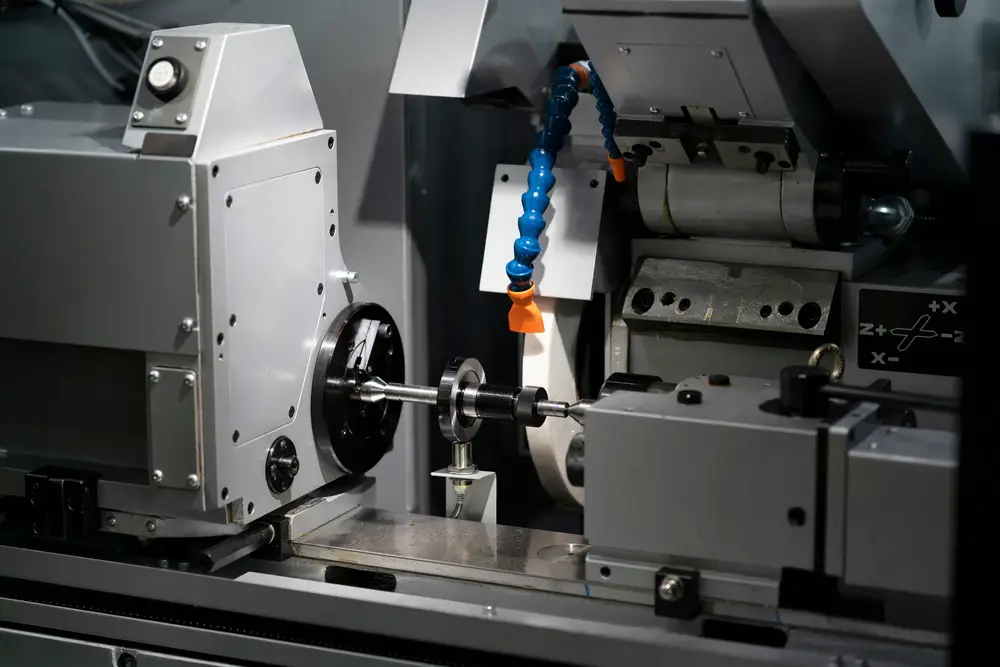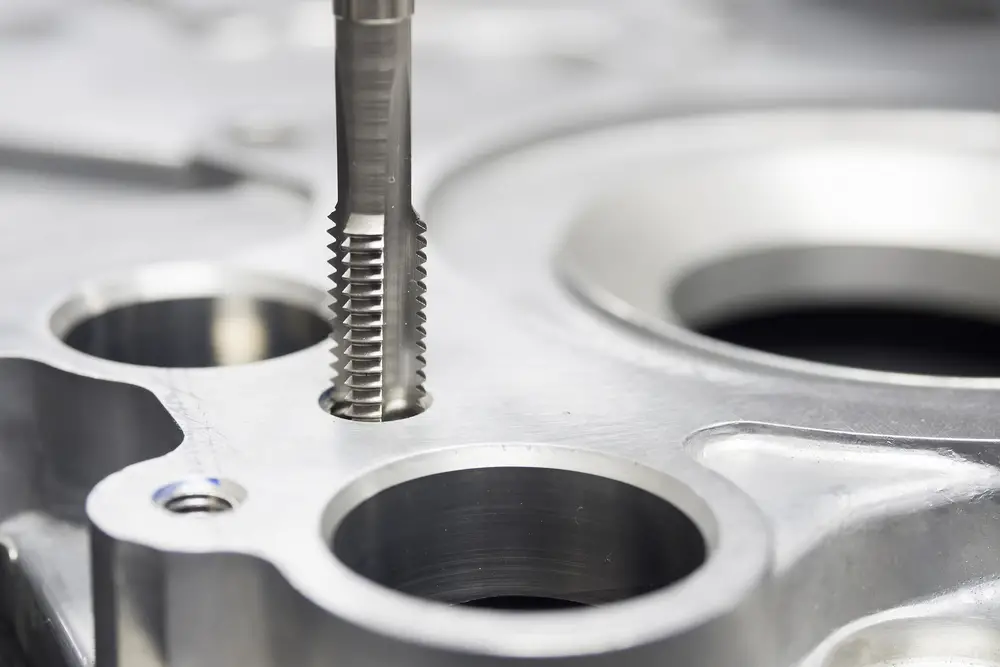A Comprehensive Guide to Automatic Lathes!
Are you struggling to achieve precision and efficiency in your machining operations?
Automatic lathes are powerful machines that can revolutionize your machining processes, but only if you know how to harness their capabilities. From CNC lathes to turret lathes, these machines offer a range of benefits, including increased productivity, improved accuracy, and reduced labor costs.
In this comprehensive guide, we’ll explore their types, features, advantages, and disadvantages!

Key Takeaways
- Automatic lathes use computer-aided design to create precise cuts and shapes on a variety of materials.
- There are several types of automatic lathes, including Swiss-type and multi-spindle lathes.
- The features of an automatic lathe include a spindle, tool turret, and computer control system.
- The advantages of using an automatic lathe include increased productivity and precision.
- The disadvantages include high upfront costs and limited flexibility for custom designs.
- To operate an automatic lathe, one must have knowledge in programming languages such as G-code or M-code.
What are automatic lathes and how do they work?
Automatic lathes are machines designed to perform machining operations with minimal human intervention. They operate by rotating a workpiece while a fixed cutting tool shapes it, allowing for the efficient production of parts. These lathes can be mechanically controlled or use CNC (Computer Numerical Control) systems for automation.
So how do they work?
Material Handling
Automatic lathes typically work with bar stock, which is fed through the spindle. The machine automatically grips and rotates the bar as it is machined.
Machining Operations
Multiple cutting tools are used to perform various operations such as drilling, boring, and cutting simultaneously. This setup allows for high precision and efficiency.
Automation
Earlier models used mechanical cams for control, while modern versions utilize CNC technology. This advancement enhances precision, productivity, and flexibility in machining operations.
Multi-Spindle Configuration
Some automatic lathes have multiple spindles that allow several parts to be machined at once, further increasing production speed and efficiency.
types of automatic lathes available in the market
When it comes to automatic lathes, there are a variety of types available in the market. Each type has its own unique features and advantages that make it suitable for specific applications.
1. Swiss-type lathe: This type of lathe is known for its precision and accuracy when working with small parts. It uses a sliding headstock design that allows for greater control over the cutting process.
2. Multi-spindle lathe: As the name suggests, this lathe has multiple spindles that can work on multiple parts at once. This makes it ideal for high-volume production runs.
3. CNC lathe: A computer-controlled machine that allows for greater precision and automation in the manufacturing process.
4. Screw machine: A specialized type of lathe that is designed specifically for producing screws, bolts, and other threaded parts.
5. Turret lathe: This type of lathe has a rotating tool turret that allows for quick and efficient tool changes during the machining process.
automatic lathe key features
Discover the special features that make automatic lathes different from other machining tools.
• High-speed production: Automatic lathes can produce parts at an incredibly fast rate, which makes them ideal for mass production.
• Versatility: These machines can handle a variety of materials, shapes, and sizes, making them suitable for a wide range of industries.
• Precision: Automatic lathes have incredible accuracy and can produce parts with tolerances as low as 0.0001 inches.
• Automation: With CNC technology, automatic lathes require little human intervention, reducing the risk of errors and increasing efficiency.
• Customization: These machines can be programmed to produce customized parts according to specific designs and requirements.
advantages of using an automatic lathe
With automatic lathes, you can create components faster than ever before, without sacrificing quality.
* Reduced Labor Costs: One of the most significant advantages of using an automatic lathe is that it reduces labor costs. The machine can operate continuously with minimal supervision, which means you don’t need as many workers to monitor the production process.
* Improved Precision: Automatic lathes use computer numerical control (CNC) technology to perform accurate cuts and shapes. This precision results in consistent quality across all parts produced, reducing errors and increasing customer satisfaction.
* Increased Production Speed: Compared to manual lathes, automatic lathes can produce parts at a much faster rate. They also have higher spindle speeds, enabling them to complete tasks more quickly than their manual counterparts.
* Versatility: Automatic lathes come in different types and sizes, each with its unique features and capabilities. This versatility allows manufacturers to choose a machine that aligns with their specific requirements.
disadvantages of using an automatic lathe
When it comes to automatic lathes, there are undeniable advantages. But like all things, there are some downsides as well.
• Cost: Automatic lathes can be expensive compared to manual machines. They require a significant upfront investment to purchase and set up.
• Limited flexibility: These machines are designed for specific tasks, so they may not work for every project. They lack the versatility of manual lathes that can be adjusted on-the-fly.
• Maintenance: Automatic lathes require more maintenance than manual ones due to their complexity. They have many moving parts that need regular cleaning and lubrication.
• Programming: Learning how to program these machines takes time and effort. It requires specialized knowledge and training that may not be readily available.

How do you operate an automatic lathe, and what skills are required?
Operating an automatic lathe is a skill that demands a keen eye, a steady hand, and a deep understanding of the machine’s inner workings. To truly master this art, you must become one with the lathe, learning the intricacies of its various components and how they function together in perfect harmony.
Here are some key skills required to operate an automatic lathe effectively:
- Technical knowledge: You need to have a solid grasp of machining principles and understand how different materials behave when they’re being cut.
- Attention to detail: Automatic lathes require precise adjustments and careful monitoring throughout the machining process.
- Mechanical aptitude: You need to be able to troubleshoot problems on the fly and make adjustments as needed.
- Communication skills: If you’re working as part of a team in a manufacturing environment, you’ll need to communicate effectively with other operators and supervisors.
To get started with operating an automatic lathe, here’s what you’ll typically need to do:
1. Set up the machine by selecting the appropriate cutting tools for your job and loading them into the tool turret.
2. Load raw material into the machine using the chuck or collet.
3. Set up your machining parameters such as spindle speed, feed rate, and depth of cut.
4. Monitor the machine throughout the machining process for any issues or abnormalities.
5. Make adjustments as needed based on your observations.
6. Remove finished parts from the machine once they’ve been produced according to your specifications.
What types of parts can be produced using an automatic lathe?
Automatic lathes are versatile machines that can produce a wide range of parts with high precision and accuracy. From small components like bolts and screws to complex parts like gears, valves, and pistons, automatic lathes can handle it all. These machines use computer-controlled cutting tools to shape raw materials into finished products.
One of the main advantages of automatic lathes is their ability to produce identical parts with consistent quality. The process is highly accurate, with tolerances as low as a few microns. This level of precision makes automatic lathes ideal for applications that require tight tolerances and exacting specifications.
In addition to their precision, automatic lathes offer several other advantages over traditional machining methods. They are faster than manual or semi-automatic machines, which means they can produce larger quantities of parts in less time. They are also more efficient, since they require less operator intervention and setup time. Overall, the combination of speed, accuracy, and efficiency makes automatic lathes an essential tool for modern manufacturing processes.
Here’s a table summarizing the types of parts produced by automatic lathe:
| Type of Part | Examples |
|---|---|
| Cylindrical Parts | Bolts, screws, shafts |
| Complex Parts | Gears, valves, pistons |
| Precision Parts | Bearings, nozzles |
Whether you need simple cylindrical components or complex precision parts with intricate geometries, an automatic lathe can get the job done quickly and accurately!
Wrapping Up
So, after exploring the world of automatic lathes and delving into their parts, types, features, advantages, disadvantages, and operations, it’s clear that they’re a powerful tool for modern manufacturers. These machines offer unmatched precision and speed while reducing labor costs and increasing output. However, it’s important to note that not all automatic lathes are created equal – some designs may be better suited for certain materials or applications than others. Ultimately, whether you choose to invest in an automatic lathe will depend on your specific needs and goals. But one thing is for sure – with the right machine in hand, you’ll be able to take your manufacturing capabilities to the next level.
Click Here to Learn about Which Machine Should You Invest in First: Lathe or Mill?
